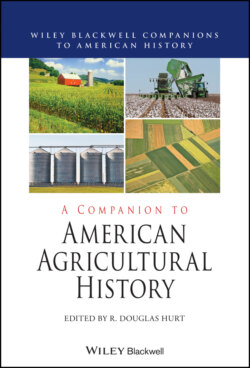Читать книгу A Companion to American Agricultural History - Группа авторов - Страница 30
Northern States, 1789–1815
ОглавлениеThe farmers in the New England states in this period were primarily known for emigration to the West. Those who remained in Massachusetts, Rhode Island, and Connecticut turned to livestock, fodder, truck farming (vegetables), and orchards as a means of livelihood; they could so because of urbanization. But the most important agricultural export of the New England area after 1790 was its farmers (Barron 1984; Alan Taylor 1990; Henretta 1991; Christopher Clark 2006).
Great change did not come to the middle coastal states of Pennsylvania, New York, and New Jersey between 1790 and 1830. They were the breadbasket of the colonies, where wheat continued to be the main crop. Farmers used the same technology that they had acquired before the Revolution and kept to the same crop rotations. By 1800 and afterward, due to soil exhaustion, farmers began to use clover and other root crops as a way to regenerate the soil. Change was distinctly connected to rise of the cities of the region: New York City, Philadelphia, Baltimore, and Albany. By 1815, urban areas induced farmers to engage in truck gardening and butter and cheese production (Bruegel 2002a; Stoll 2002). New York housed great landlords who rented their land, but the notable protests against them came after 1830. In Pennsylvania wheat was strong in the southeastern part of the state and farmers also raised much swine and livestock for the Philadelphia market. Overall, farmers in both New York and Pennsylvania sought competency and independence rather than commercial success (Fletcher 1950; Mancall 1991; Bruegel 2002 a).
Northern agricultural practices generally followed colonial precedent, but in 1815 all that was about to change.
